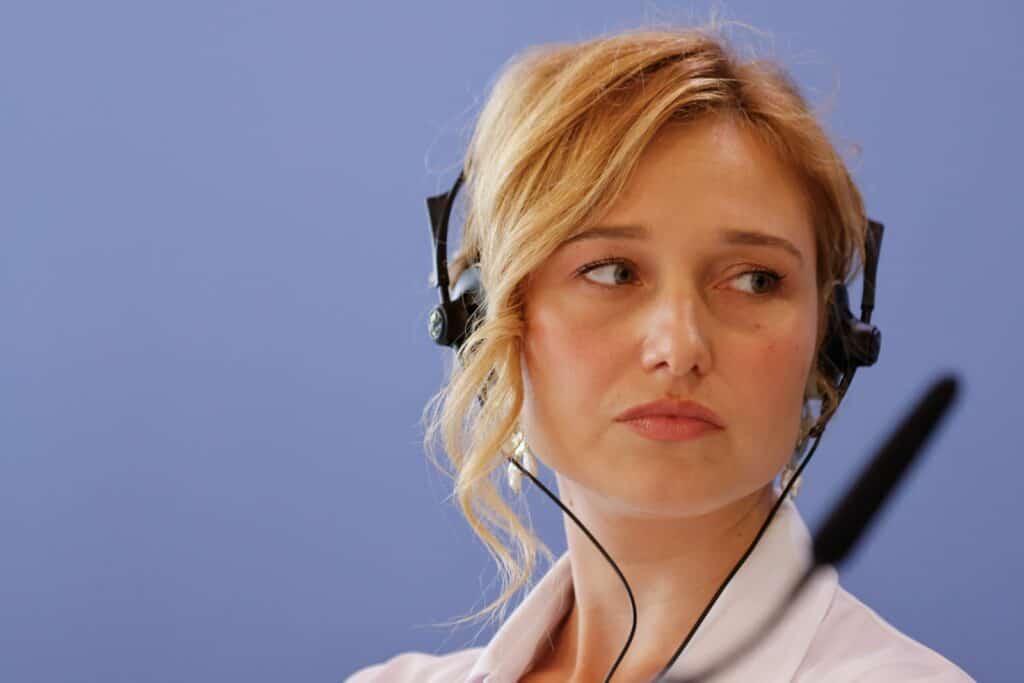I watched László Nemes’ third film, Orphan (Árva), reviewed here, which was screened in the Venice Film Festival Competition. Afterwards, I had the opportunity to conduct an interview with the director.
How does the experience of working on Orphan compare to Sunset?
László Nemes: I had more time due to COVID. I was supposed to shoot it in 2021, but then it didn’t happen. Finally, I was able to shoot it in 2024. I was more relaxed with this. It’s the first time I could let go of the high standards, in a way, and the controlling, judging super-ego that was hovering over my head. It was a calmer way of making a movie.
The Disapproving Swede: You said you were more relaxed with this film. That’s slightly surprising to me, considering how personal it is. It is based on your father, András Jeles’s story. Can you talk a bit about that backstory with your father?
LN: Yes, my father was here in 1979 when I was two years old with his movie…
TDS: A kis Valentinó?
LN: Ah, you know Hungarian cinema. It was at the Mostra, but it didn’t get any awards.
Lászlo Nemes’ family story
TDS: What about the backstory for the film?
LN: The story has haunted me throughout my childhood. My grandmother was telling me about it, and it seemed incredible. For instance, the fact that my father had to learn his real name. He had to change his name at the age of 12; it’s tremendously traumatic. I used it as a source material and adapted the screenplay from it. I didn’t use it as an absolute truth. For example, my father was saying he was thinking that his real father had another son that he had chained in the attic in the countryside. I thought it was beautiful. It’s a harsh, traumatic, beautiful fantasy.
I wanted to add these layers of his personal projections of my own—a way of approaching the subject in the movie and building up with other elements that I invented.
TDS: Together with Clara Royer?
LN: With Clara, yes. She has been my co-writer for a long time.

TDS: The father is obviously important, but I would like to stress the mother in the story. She’s played by Andrea Waskovics. Can you discuss her role in the story?
LN: Yes, she is my grandmother. Her name is Klara, just like my co-writer.
TDS: But spelled with a K.
LN: Yes, exactly. It depicts something so specific that we rarely talk about those difficult choices
that so many women in this kind of context had to make. She welcomes back her abuser. It is not easy for her to love her child, to put it mildly, because of his genesis. The way those things are interacting, it’s not an easy moral question. It’s a labyrinth. That’s why I wanted her to be in the part. It’s also a way for me to pay homage to her. But not representing her only in black and white.
TDS: Andrea primarily works in the theatre, correct, in Vigszinhás, for instance?
LN: Yes.

The visual style of this film is very different from Son of Saul or Sunset. What’s the motivation for shooting this in a different style?
LN: This film required a different style. I changed the tools and I changed the grammar. Everything had to be according to this principle of not going beyond the understanding of the kid, to accompany him, and be at his level. So in a way, it’s a reformulation of my subjective filmmaking, but with different tools and in ways that have a different narrative logic.
TDS: And Mátyás [Erdély] is very important in this regard.
LN: We work with him very closely, and he’s not there just to make beautiful imagery; he is always there to help me frame what’s important for the story and for the character.
TDS: Can you talk about the use of colour? The use of the colour red is quite striking.
LN: Well, we wanted roughness and sweetness at the same time. We wanted harshness and softness. And we had a special laboratory process for that. We worked on this quite tremendously. Special optics, special lenses. So, yeah, I’m happy with my collaboration.
Are there any images that inspired you?
LN: Several photographers work, Saul Leiter and Ernst Haas.
Any films?
Not particularly, it’s just it was more general with everything in the background, but nothing particular.
TDS: I thought a bit about classic 80s Hungarian films set in the same era. I even talked briefly with Mátyás about it yesterday. The use of red, not least the balloon, made me think of Sándor Kardos’ work in Eldorádó, for instance, as well as Time Stands Still, which is roughly set in the same era.
LN: That’s interesting, but we didn’t really think like that.
TDS: No, that’s from the spectator’s perspective.
LN: Sándor Kardos worked with my father [on his first three features].
TDS: I know you have a new project. How is that going?
LN: I have a French project. We’re going to shoot it in September. It’s called Moulin. It will be in true anamorphic Cinemascope.
